With all the ingredients of a thriller government cover-ups, local rivalry and intrigue the story of the Marree Man geoglyph in South Australia is enduringly fascinating.

ON A REMOTE AND EMPTY desert plateau, on the banks of Kati Thanda-Lake Eyre, South Australia, is the world’s second-largest geoglyph.
Unlike the 1000-year-old Nazca Lines in Peru that hold the title of the biggest geoglyph, the artwork that became known as the Marree Man is of more recent origin. Located 60km north-west of the tiny town of Marree, it was first spotted from the air by a local pilot in 1998. Investigations were immediately launched into the work, which is 4.2km long and shows a man hunting with a stick.
Local pub-owner Phil Turner bought the Marree Hotel seven years ago partly on the strength of the Marree Man. “I got carried away, like everyone else, with the myth, the mystery and the intrigue, the fact they couldn’t find the people who did it,” he says. “The Marree Man was such an attraction – scenic flights were helping business – and it was part of our decision to buy the pub.”
Theories about who created it sprouted and grew in all different directions. Investigations centred for a while around the US Army, thanks to the Man’s proximity to the joint US-Australian defence projects of the Woomera Prohibited Area, and the sending of press releases purporting to be written by its creator that included US terminology. In 1999 a plaque was discovered near the Man’s head showing a US flag, and another flag was found in a nearby pit, although it’s been suggested both were red herrings. Inevitably, someone also proposed a theory that it was the work of aliens.
Another possibility is that it was created by SA artist Bardius Goldberg, reported by the Adelaide Advertiser to have told friends he’d been commissioned – and paid $10,000 – to create an artwork visible from space. However, Goldberg died in 2002, and with him the possibility of discovering the truth of that theory.
Diese Geschichte stammt aus der September-October 2018-Ausgabe von Australian Geographic Magazine.
Starten Sie Ihre 7-tägige kostenlose Testversion von Magzter GOLD, um auf Tausende kuratierte Premium-Storys sowie über 8.000 Zeitschriften und Zeitungen zuzugreifen.
Bereits Abonnent ? Anmelden
Diese Geschichte stammt aus der September-October 2018-Ausgabe von Australian Geographic Magazine.
Starten Sie Ihre 7-tägige kostenlose Testversion von Magzter GOLD, um auf Tausende kuratierte Premium-Storys sowie über 8.000 Zeitschriften und Zeitungen zuzugreifen.
Bereits Abonnent? Anmelden

SULAWESI SENSATIONS
There are worlds within worlds and marvels untold waiting to be experienced on Indonesia's remote islands.
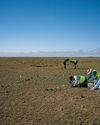
SEARCHING FOR AUSSIE DINOSAURS
Our understanding of where to find ancient life in Australia has been turned on its head by a new appreciation of the country's geology. Now the world is looking to our vast outback as the latest hotspot to locate fossils.
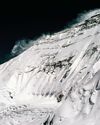
THE HARDEST NIGHT
The first Australian ascent of Mt Everest in 1984 is one of the great feats of mountaineering. Climbed by a small team semi-alpine style, with no bottled oxygen, via the Great (Norton) Couloir, it remains unrepeated 40 years later.
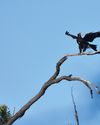
WEDGE-TAILED WONDER
The chance discovery of an eagle nest leads to an extended vigil observing normally hidden behaviours of one of nature's supreme winged marvels.
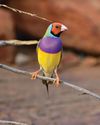
BURDENED BY BEAUTY
Northern Australia's Gouldian finch survives in huge numbers in cages around the world, but its wild population continues to struggle.
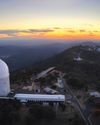
A TELESCOPE FOR A GOLDEN AGE
After a stellar 50 years as one of the country's major scientific assets, the AAT continues to play a major role in keeping Australian astronomy on the world stage.
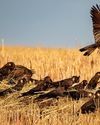
COCKY WHISPERING AT COOMALLO CREEK
This patch of remnant bush on the edge of the West Australian wheatbelt is a place loved by one of Australia's rarest bird species and the man who has studied the site for more than 50 years.

A PIONEERING PAIR
Louisa Atkinson and her mother, Charlotte, were among Australia's earliest authors, and pioneers in women's rights.
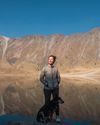
THE LONGEST WALK
Lucy Barnard is walking from Argentina to Alaska -the length of the Americas - on an extraordinary journey of endurance and adventure.
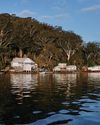
SECLUDED, BUT NOT ALONE
In an era of heightened social isolation, where many of us lead lonely lives, Dangar Island offers the chance to be part of a supportive, connected community.